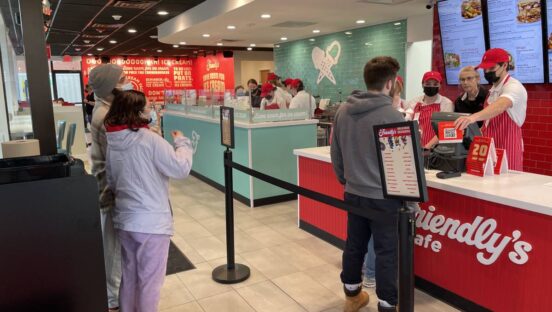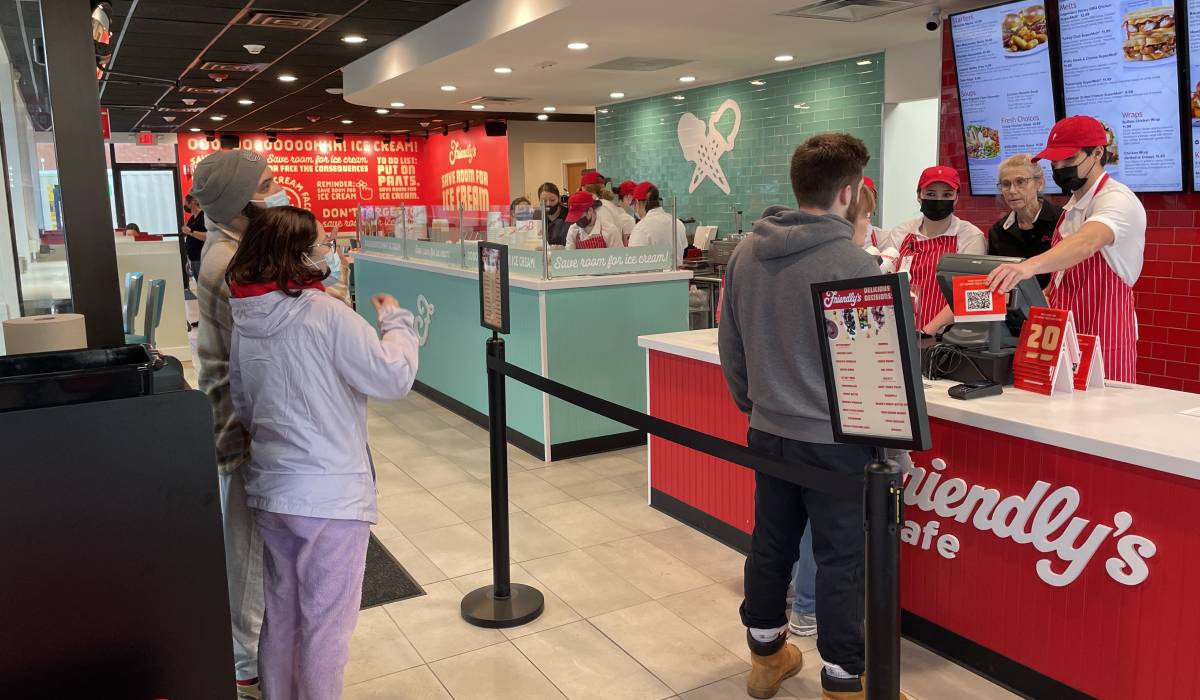Once slandered as the “B word,” bankruptcy is finding new life as an opportunity for new beginnings. Blue-chip brands like Eddie Bauer, Delta Air Lines, and the Chicago Cubs are among the list of house-hold business names that have filed for bankruptcy in modern times, times in which even city governments—the most notable being Detroit—have looked to bankruptcy to solve fiscal woes. Those once-bankrupt American institutions, along with more than 1 million personal bankruptcies each year, suggest that the “B word” may have has lost at least some of its bite.
Nowhere is that more evident than in the restaurant arena, where dozens of brands big and small have used bankruptcy as a tool to climb out of bad leases and mounting debt.
Without filing for Chapter 11 protection in October 2012, Back Yard Burgers CEO David McDougall says, his 68-unit chain wouldn’t be on its current upward tick. Since 2007, the company has closed about half of its stores, scaled back its geographic footprint, and tweaked its menu, which has included bringing back the customer-favorite seasoned fries. Sweeping changes post-bankruptcy set the stage for 12 consecutive months of same-store revenue growth. In the first quarter of 2014, company-owned stores boosted same-store sales by 10.6 percent.
McDougall credits much of that growth to the company’s reorganization through Chapter 11. Without bankruptcy, he says, Back Yard Burgers wouldn’t look anything like it does today.
“The good news is that didn’t happen,” McDougall says of the bleak possible future the brand was facing before bankruptcy. “But we were in a real bind where our expenses were far exceeding our revenue, and that just can’t go on.”
The bankruptcy was sparked by the Great Recession, which exposed some of the brand’s inherent weaknesses in unit-level economics. For several years, company leaders had tried to stabilize store counts and generate more revenue. But the burden of debts and unfavorable leases after the economy tanked pushed the brand to file Chapter 11.
“All those things culminated,” McDougall says.
Many experts and executives say bankruptcy has lost its stigma and that even well-performing companies may want to consider it when looking to restructure or cut debt. But it’s clearly not for everyone: Bankruptcy is onerous, lengthy, and expensive. And McDougall warns that it can be emotional. At its core, he says, bankruptcy is a sign of failure.
“There’s an emotional cost, especially for the loyal employees,” he says. “It takes a toll on people. It’s not a good thing. Unfortunately, it’s sometimes a necessary thing. People start questioning, ‘Do I want to be here?’ It’s a lot more fun when you’re growing than when you’re contracting. But sometimes you’ve got to get smaller before you can get larger. And that’s certainly the case here.”
In recent years, bankruptcy has been used by both franchisees and corporate teams in the limited-service space. Uno Chicago Grill closed more than a dozen stores after its 2010 bankruptcy. Quiznos is seeking to cut more than $400 million in debt through its “pre-packaged” restructuring plan announced in March. And Sbarro is in the midst of its second bankruptcy in three years.
“I think, overall, the economic challenges and the competitiveness of the industry are forcing more brands to consider bankruptcy,” says Darren Tristano, executive vice president of the research firm Technomic. “It’s just a tough environment. And the ones that are on the bubble are the ones struggling the most. I would say the trend follows the economic climate more than anything.”
And it’s the more established brands that are increasingly finding their way to court, he adds. “They often include legacy brands that have been struggling for years getting older as consumers are getting younger,” Tristano says. “They need to invest, to reimage, to rebrand, to remodel, and oftentimes lack the funds or the willingness.”
That’s what Friendly’s Ice Cream CEO John Maguire says happened to the East Coast chain before he came on board in 2012. Friendly’s, known as much for its ice cream as its food, had strayed away from its core values, Maguire says. There was a notion that the company needed to cut costs, so they stopped investing in people, quit fixing problems in the stores, and cut food portions and quality.
“I think unfortunately what happened to Friendly’s was not a unique story,” he says. “What happened to Friendly’s over the last 10 or 15 years was a story of this: As sales fell, people panicked and tried things out of panic to get things to rebound.” Maguire, who joined Friendly’s after nearly 20 years at Panera Bread, says the challenge for legacy brands like the nearly 80-year-old Friendly’s is to stay true to the brand identity while also remaining relevant in the 21st Century.
In 2012 surveys, customers listed three main complaints about Friendly’s: Stores were not well maintained, the food was mediocre, and the staff, at Friendly’s, was unfriendly. Since the 2011 bankruptcy, executives have yanked items like shrimp and chicken stir fry from the menu, while products like high-quality fried fish were added. The brand is in the midst of remodeling all of its 350 remaining stores. And Maguire says he implemented a back-to-basics training program for all employees.
While customers may not care all that much about a chain’s bankruptcy, Maguire says, there is a cost in awareness. After emerging from Chapter 11 and closing 100 stores, many assumed the whole brand was defunct. Aside from revamping the entire operation, the company had to invest in print and broadcast advertising to get the word out that Friendly’s was open for business.
The number of businesses filing for bankruptcy fell 17 percent in 2013, from 42,008 in 2012 to 34,892, according to statistics from the Administrative Office of the U.S. Courts. Veteran bankruptcy attorney Carolyn Johnsen says so many companies have filed bankruptcy since the recession that the stigma has largely vanished.
“People don’t really need to hide out from bankruptcy,” says Johnsen, who is chair of the business restructuring and reorganization department at the law firm Jennings, Strouss & Salmon. “The thing you need to understand is that bankruptcy is a good business tool. It’s not just for a financially distressed company.”
[pagebreak]
Bankruptcy helps with cleaning up a debt-burdened balance sheet, she says. And it’s often used to set a brand up for a major turnaround or sale. It’s a fresh start. “The phoenix rises from the ashes,” Johnsen says. “Maybe this business just wasn’t quite right. So someone else comes in and the original owners lost money. That is difficult, but you’ve saved something in the economy that’s worth saving. That’s the whole goal.”
But Johnsen warns that bankruptcy is far from easy. The legal fees can be oppressive, and it usually takes at least a year to complete the bankruptcy process. Those considering filing for bankruptcy, she says, should know exactly what it is they’re trying to accomplish up front.
“What’s the end game here?” she says. “Are you trying to eliminate debt? Expand your business? Are you trying to sell it?”
It’s also important to remember that bankruptcy isn’t always the only choice, she says. Some brands can still meet their restructuring goals outside of the courts.
“Bankruptcy is a tool to use carefully to resolve very specific problems. It’s not for everybody,” says Andy Wiederhorn, CEO of Fatburger. “You run the risk of losing control of the process when the court and other creditors are involved.”
Two Fatburger subsidiaries filed for Chapter 11 protection in 2009 as the company sought to transition from a majority of company-owned stores to nearly all franchised units. Real estate drove the restructuring, Wiederhorn says. Stores that were once in high-traffic areas had gradually dwindled as development moved away.
“What used to be the most popular part of town is now an old part of town,” the CEO says. “The economics that may have originally worked didn’t work, given the sales levels in some of those locations. But we still had lease terms obligating us to stay there.”
Wiederhorn points to a former Fatburger store at the Third Street Promenade in downtown Santa Monica, California. The store was renting the space for $13,000 a month, but through a lease renewal before the Great Recession the landlord demanded $34,000 a month, a number that Widerhorn says would never make economic sense. So the company broke the lease.
The bankruptcy allowed Fatburger to close unprofitable stores, terminate unfavorable leases, and switch its focus from operating company-owned stores to supporting its franchisees. The brand has now grown from about 90 units to 150, a figure that includes 25 units of its sister chicken-wing concept Buffalo’s Cafe.
“It’s a huge success story,” Wiederhorn says.
But it’s also a story that he thinks would have been possible without bankruptcy, which racked up legal bills in the seven digits.
“I can’t say we saved any money doing it that way. We may have spent more money going through bankruptcy, but we achieved the result we wanted,” Wiederhorn says. “I think in hindsight we could have achieved the same results at probably the same cost, because it was so expensive, honestly. I don’t know that we saved any real money in bankruptcy that we wouldn’t have spent if we’d just negotiated richer deals with our creditors.”
Tom Mullaney, a founding partner of the real estate and financial restructuring firm Huntley, Mullaney, Spargo & Sullivan, says there are generally three problems that lead restaurant companies to seek bankruptcy: excessive past growth, use of large amounts of financial leverage, and concept deterioration. Bankruptcy is most used for those looking to solve problems with the balance sheet or real estate lease liability. Rarely do vendor contracts or labor costs push brands to bankruptcy, he says.
Mullaney warns against counting on bankruptcy as a foolproof means to prepare a company for sale.
“Clearly some folks use it with the idea to dress up a company for sale to a buyer,” he says. “But that’s easier said than done. By and large, when a company in the restaurant industry goes through bankruptcy, it’s a symbol of a multitude of problems. And it’s very hard to come back from bankruptcy.”
But when things aren’t going well, when debt is piling up or a company is unable to make its loan payments, Mullaney says, it would be irresponsible to shy away from bankruptcy.
“I would say the ‘B word,’ as we call it, has a pejorative connotation. And that’s the wrong way of looking at it,” he says. “Bankruptcy is simply a problem-solving mechanism. And it’s a legitimate problem-solving mechanism. When a company is facing growing storm clouds on the horizon, it would be corporate malpractice not to examine whether the bankruptcy code is the best and most efficient way of moving forward.”









